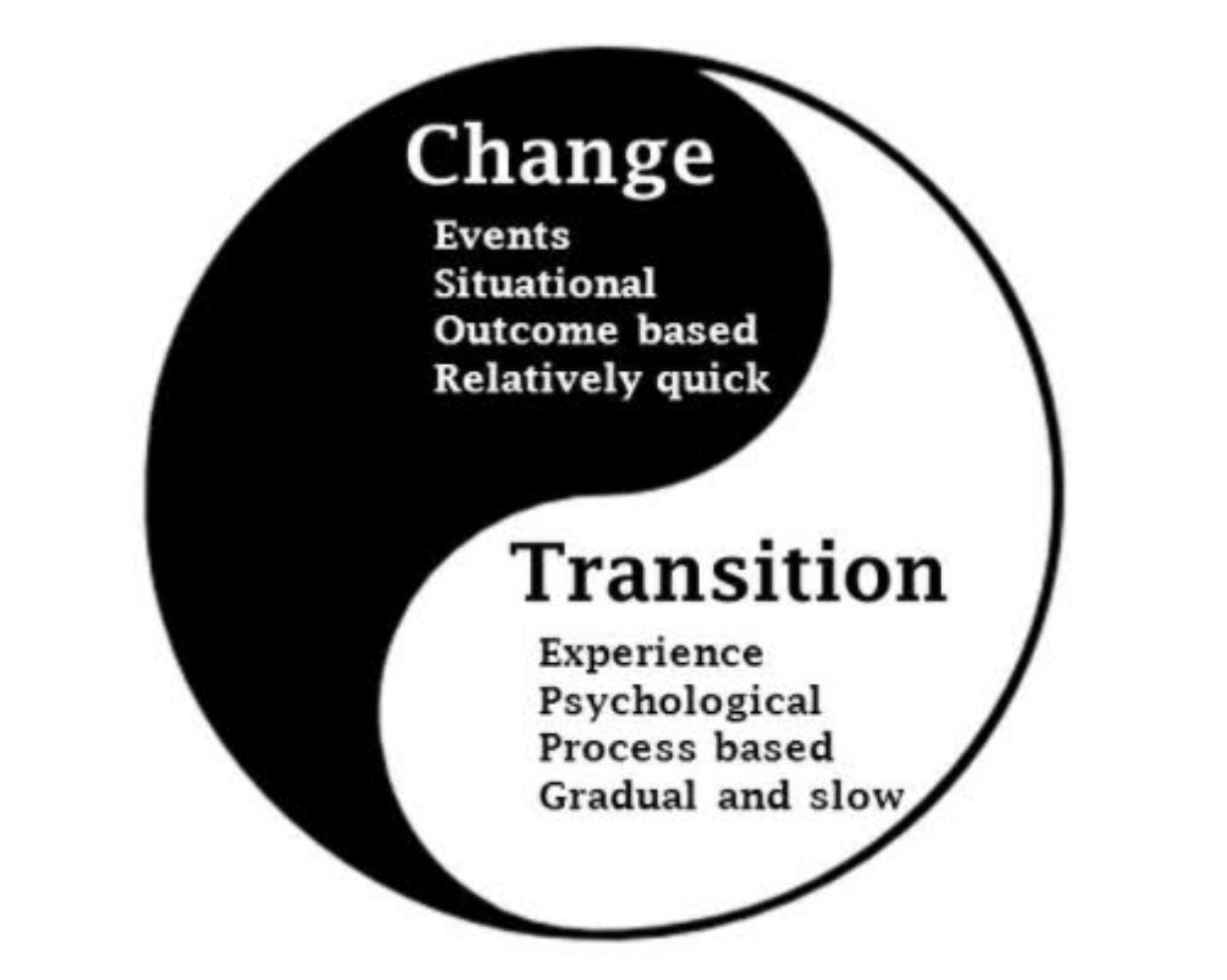Benny Herlambang's Key Ideas from Managing Transitions
by William Bridges
Ideas, facts & insights covering these topics:
15 ideas
·846 reads
5
Explore the World's Best Ideas
Join today and uncover 100+ curated journeys from 50+ topics. Unlock access to our mobile app with extensive features.
Change vs Transition
Change and transition, both are not the same. Change is the actual shifting of condition, while transition is more about people affected and adapting the changes.
Transition begins when we end the old process/situation, and it ends with a new beginning. When two companies have a merger, the transition begins when you end the old organization and transition ends when you start adapting a new one.
And managing transition means you bring people through the transition as smoothly as possible.
9
108 reads
One doesn’t discover new lands without consenting to lose sight of the shore for a very long time
ANDRE GIGE
12
111 reads
Stages of Transition
Three stages of transition are:
- Ending – the end of the old process, the old way, or the old circumstances
- Neutral – in-between time after the end of old era and before you start a new process, including the confusion, the chaos, the negative words, doubts and discomfort
- Beginning – the start of the new process, the new way, or the new circumstances
Transition is personal, therefore each person may have different phase. Even people may have themselves in two phases at the same time, i.e., start to use new tools at work while working with same process that being reviewed by Change Management team.
9
63 reads
It All Start With an Ending
To help people to accept the ending, so they can start the transition smoothly, some steps can be done:
1. Deep dive the incoming changes – be specific, be detail, avoid generalizations
2. See the consequences – each change will cause another one, look forward and define the possibilities
3. Prepare for some losses – love it or not, change sometimes make people lost something, try to identify the people and what they will lose: job title, comfort desk, access, etc
4. See every loss as real as other – losses are not only something material, as immaterial losses should also be considered
10
61 reads
5. Prepare for people reaction – changes will bring reactions from people. Expect for a strong one
6. Be open – communicate everything crystal clear and show empathy
7. Consider something for recovery – think and discuss for any opportunity of compensation
8. Consistent communication – just keep it flowing to keep people up-to-date
9. Respect the past – be clear on the ending, make people realize and see that some part of their past will end, and they will move to a new future.
9
50 reads
Adjustment During Neutral Zone
After the end but before the beginning, there will be a zone of chaos and confusion, it’s the Neutral Zone. People will take their time to adjust with new process, letting go the old circumstances and preparing for a new one. This is the phase will sometimes motivation and performance are impacted.
This also a very creative period, where people can create breakthrough improvement as they currently not only no longer bond in an old habit/procedure but also not yet having any bond with a new one.
9
34 reads
To help people going through the confusing neutral zone, you can do:
1. Make the change achievable – see people going through the change as human that need time to adjust, prepare them for what is coming and tell them the whole picture
2. Be flexible – if necessary, drop old rules that blocking the way of transition
3. Make some shorter goal – to keep people spirits up, making short goals towards the big one is advised
4. Keep the info flowing – communicate clearly and consistently
11
34 reads
Beginnings are strange things. People want them to happen but fear them at the same time
WILLIAM BRIDGE
11
44 reads
The New Beginning
Having people out of their comfort zone, making a change, is challenging. Some people will actually enjoy the neutral zone as they are ‘roaming’ free without new procedures, or some people will try to bring the old obsolete value into the new process.
10
39 reads
To help people start the new beginning and accept it, remember 4 P’s:
Purpose – it will be easier to accept if people can see the purpose clear, real, and specific.
Picture – showing your purpose in a real sample will even better, introduce them to someone who had been successfully going through the change, show them the real/actual benefit of changes that can be seen/imagined
9
42 reads
Plan – transition plan will be more personal than a change plan. Change plan will include the date if people moving to new building, but transition plan will include the date of farewell party, the date of people can see their office for the first time, etc
Part – try your best to make people be a part of the change, involve them in the party, involve them in the preparation, etc
9
36 reads
Keep Changing, Keep Transitioning
As people or organization will continually changing, as they should to, transition will always be part of it. Either it’s a big or a small one, each may bring potential problem when the change and transition is not managed well. Managing the change through a managed transition means you manage the fear of change, be open and earn trust from the people. To do so, always be honest, involve others, be clear and honour your words and commitments. So people will put their trust and be on board with you through the transition.
9
37 reads
IDEAS CURATED BY
CURATOR'S NOTE
What is transition, how to manage it and why it is important. William Bridges shared the idea in his book very clearly and in a very easy way to understand.
“
Benny Herlambang's ideas are part of this journey:
Learn more about books with this collection
The history of fashion
The impact of fashion on society
The future of the fashion industry
Related collections
Discover Key Ideas from Books on Similar Topics
4 ideas
9 ideas
Change from the Inside Out
Erika Andersen
11 ideas
What Your Employees Need and Can't Tell You
Melina Palmer
Read & Learn
20x Faster
without
deepstash
with
deepstash
with
deepstash
Personalized microlearning
—
100+ Learning Journeys
—
Access to 200,000+ ideas
—
Access to the mobile app
—
Unlimited idea saving
—
—
Unlimited history
—
—
Unlimited listening to ideas
—
—
Downloading & offline access
—
—
Supercharge your mind with one idea per day
Enter your email and spend 1 minute every day to learn something new.
I agree to receive email updates








